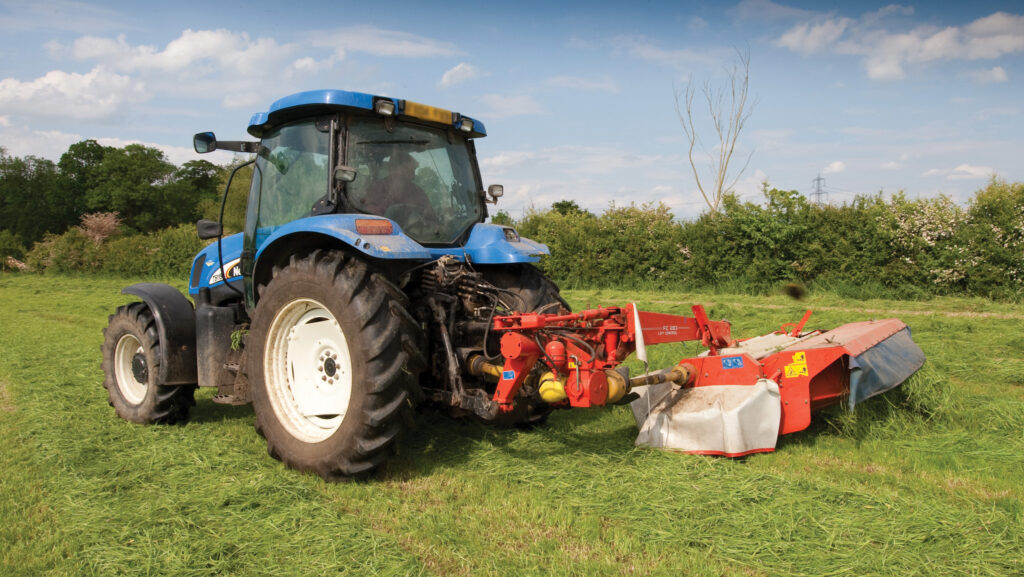Tips on improving silage quality in a wet season
 © Tim Scrivener
© Tim Scrivener Chasing high dry matter in clamp silages is costing livestock farmers money in terms of feed quality and sustainability.
Rather than wilting this year’s bumper grass crops for 36-48 hours to get a 30% dry matter (DM), it is more efficient to clamp at 26%, says Volac’s silage specialist Ken Stroud.
He acknowledges that anyone short of forage will be aiming to maximise yield to fill clamps for the coming winter.
But although farmers review their last silage analysis to guide their decision making, he believes too many are “slightly obsessed” with DM.
See also: 8 ways to produce award-winning silage
“Farmers are wilting for two to three days to get to 30%, but they are losing goodness in that time – even if they hit their ‘golden nugget’ target.
“We need to sit up and take notice of dry matter losses for sustainability,” he says.
24-hour wilt
“A maximum wilt should be 24 hours – a matter of hours, rather than days.
“This keeps volatile fatty acids down [which are less desirable for fermentation] and improves silage quality, as well as reducing the amount of yeast and mould in the crop.”
Ken says many silage analysis sheets he sees are showing rising ash contents.
This indicates soil contamination in clamps, which leads to poor fermentation from clostridia or enterobacteria. Figures above 9% result from the tedder rake being set too low.
“A tedder is a great tool for reducing wilting time, but must be used carefully so that it doesn’t bring soil into the crop.
“Any farm with a persistent problem of high ash content needs to pay more attention to cutting height and tedding,” he says.
Instead of traditionally cutting around midday when sugars are at their highest, Ken suggests mowing at 10am and tedding.
On a good drying day, with enough wind and sun, a pick-up within 24 hours will “get 26% DM on day one without effluent.”
Cutting height
Ideally grass should be cut no lower than the last leaf node, otherwise this will have an impact on the speed of regrowth.
As a mower runs through a sward quickly, it bends the grass plant over, which is why Ken recommends mowing at a minimum 10cm, depending on grass variety.
This stubble height will keep the spread cut grass away from the soil surface.
Simply taking five minutes to check cutting height by walking behind the mower will pay dividends: “Look to make sure it is not shaving fields off – especially this year, after torrential downpours,” says Ken.
“Also, set up the tedder in the field, not on concrete. This avoids it sinking in the sward. Then spend five minutes following it.
“If there are any scrapes in the soil, it needs to be raised. A tedder should ‘comb’ the grass up, not scrape the soil.”
Rain splash
Another issue can be rain splash lower down on the grass plant which leads to slurry bugs being ensiled.
This happens when slurry is spread less than 10 weeks before cutting, particularly in a multicut system starting in late April.
“Cutting every four to five weeks, we have to work very hard on our crop hygiene, so use a well-proven silage additive to help inhibit enterobacteria and clostridia,” he says.
How to minimise soil contamination of grass silage
- Fix muddy gateways
- Trap moles and roll fields before mowing
- Avoid handling grass in wet weather
- Increase cutting height
- Avoid running machinery over cut grass
- Ensure tedders and rakes are set high enough
- Clean clamp machinery, especially wheels, before starting silaging
- Keep the clamp apron clean – don’t allow field machinery and clamp machinery to run over the same area
Source: Volac
